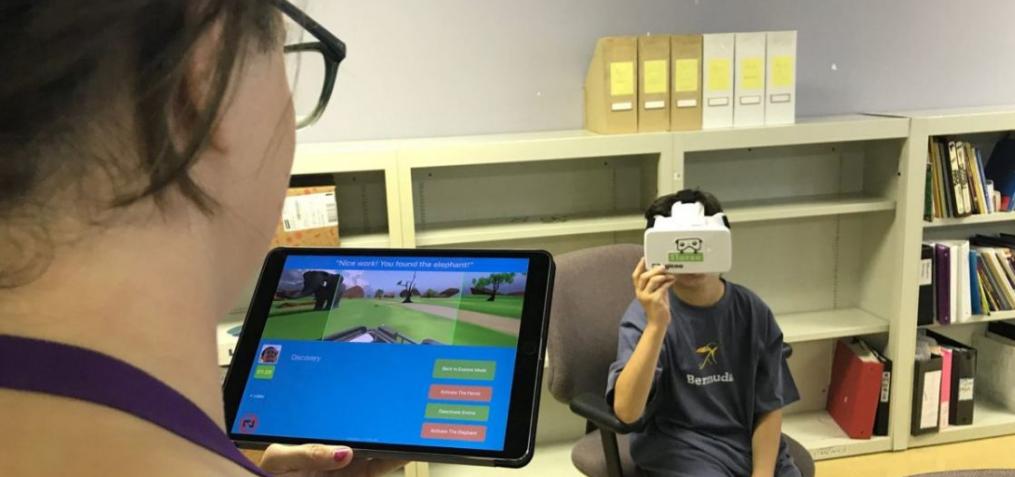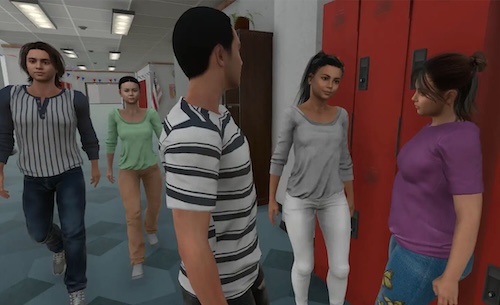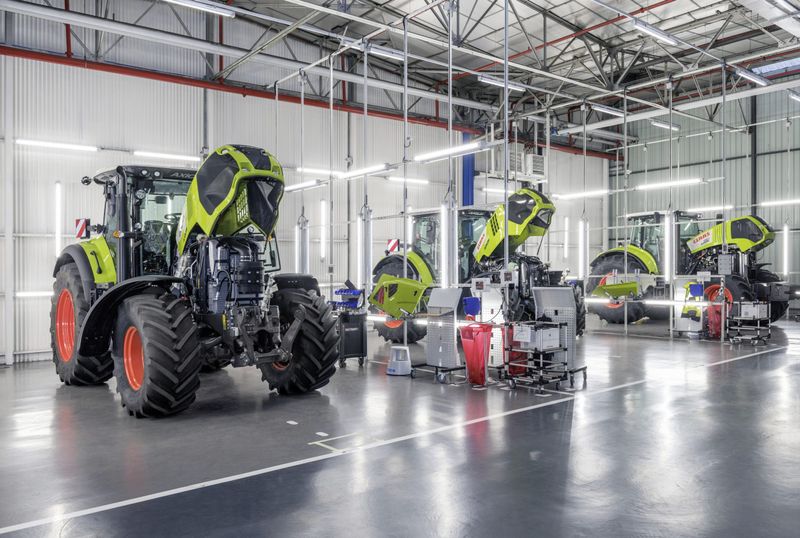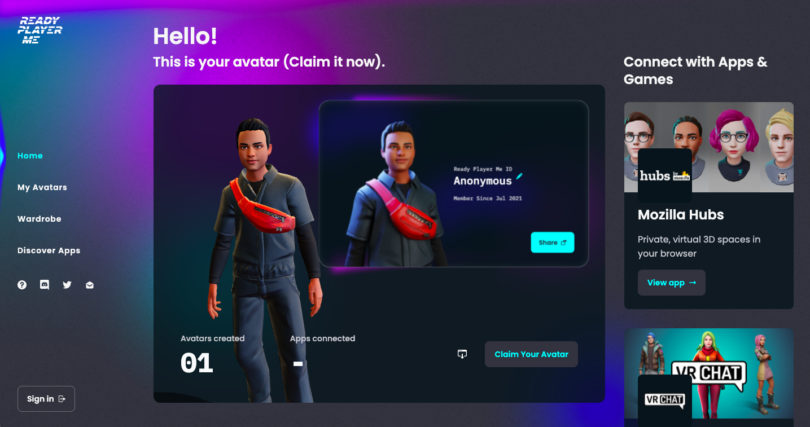Critics say VR teaches kids to be asocial. But one company is using virtual reality to teach special needs kids how to better interact with others.
Richie Jackson, a high school student at Celebrate the Children in Denville, NJ, twirls in his chair waiting patiently for the virtual reality (VR) headset. He smiles broadly placing it over his head and adjusting the strap.
Prior to using the headset, he had trouble sitting still.
“He took to it immediately,” said Stefanie D’Amore, counselor at the pre-K-12-plus school for children with autism and other special needs. “He had trouble self-regulating his behavior and with communication. Floreo’s Virtual Reality program has helped him and other students in the school.”
The students are calm and focused. They look forward to their 15-minute VR sessions.
How VR Can Help Teach Social Skills
D’Amore believes it works because users can control the settings and do stuff that’s difficult to do in real life. Programs teach students how to look both ways when crossing the street, an important lesson for many children with autism who have been known to dart out into traffic without looking.
A student with autism at Celebrate the Children in Denville, NJ tries out VR.
With the headset on, students are taught to pay attention to objects around them, to follow rules, and to feel safe. “They do this in the virtual world and apply it to the real world,” D’Amore said. “For instance, there’s a core deficit in social skills for many people with autism. In one of the programs, our students learn how to communicate with a police officer.”
In tense situations, a police officer may not understand all of the signals coming from someone with autism. Some won’t make eye contact; some have limited or no speech, and some won’t follow directions. For instance, if an officer of the law asks a student to take his hands out of his pockets, the student may refuse or runaway.
These behaviors are known to many in the autism community, because they understand how quickly interactions can escalate. A recent study found one in five young adults with autism will be stopped and questioned by the police before age 21. About five percent will be arrested.
Vijay Ravindran created the VR program used at Celebrate the Children. His company, Floreo, was developed soon after Ravindran’s son was diagnosed with autism at age 2. “He’s my inspiration,” he said. “Children using it feel empowered,” he said. “It makes them look at the world in a whole new way.”
“My wife was the one who made the connection that VR could be used as a medium for coaching skills and eventually used in therapy. I’ve learned the autistic brain has neurological differences that can present different strengths and challenges. It makes it difficult communicating with others and with focusing attention in group settings. The goal was to create VR lessons that could build communication skills.”
Vijay and Manoj Ravindran.
Students at Celebrate the Children have been using Floreo’s VR program since 2016. They’re part of a pilot program. Floreo is also used at other schools, in therapy practices, and in homes where parents are using it to help their ASD (Autism Spectrum Disorder) children navigate its many programs. “Our lessons are science-based, Ravindran said. “We are currently running several research studies including a collaboration with the Center for Autism Research at Children’s Hospital of Philadelphia (CHOP) and the National Institutes of Health (NIH).”
The Littlest Salesman
Scientists at CHOP partnered with Floreo thanks to an NIH grant to test the program. According to Julia Parish-Morris, PhD, and lead researcher on this study at CHOP, “Autistic teens and adults practicing interacting with police officers, exhibit differences in eye contact, which could be misinterpreted as avoiding questioning or looking for a way to escape. The VR intervention gives participants the opportunity to practice these social interactions and a range of appropriate responses, which we know is important for people with ASD.”
Ravindran’s son is nine years old and works the sales floor at an exhibit where Floreo’s small team shows off its programs. “He’s our most enthusiastic sales person,” his dad proudly said. “He even holds kid’s hands who try it out. Fortunately, he hasn’t asked for compensation yet.”
“Our catalogue is growing. We have more than 70 lessons from building eye contact to how to interact with peers to ways to self-regulate to avoid meltdowns. VR has so many uses.”
Quelle:
https://www.vrroom.buzz/vr-news/tech/vr-helps-autistic-kids-make-sense-world






